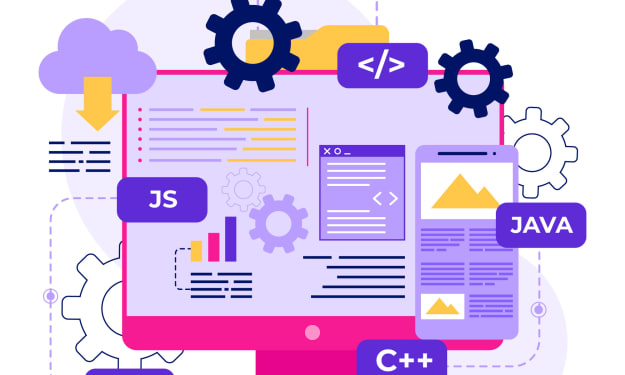Lambda Functions, Manned by Experts, at Your Service to Process Data on the Cloud
Understand Lambda Function

Table of Contents
1. Introduction
2. Server less Computing
3. AWS Lambda Functions: An Introduction
4. Designing High-Performance Lambda-Based Data Pipelines
5. Integration of Lambda with other AWS services
6. Performance and Cost Optimization using Lambda Function
7. Configuration for High Data Processing Availability and Scalability
8. Need for Executive Data Science Courses in Serverless Adoption
9. Future Trends and Key Takeaways
10. Conclusion
Introduction
The cloud is one of the huge transformative forces into this burgeoning world of data science that just ensures professionals are equipped to deal with complexities at unimaginable speeds and unmatched efficiencies. At the forefront of this revolution is serverless computing, which redefines how tasks in data processing are run and scaled. This article is going to explore the power of AWS Lambda functions—a serverless computing service—in reimagining how data scientists perform data processing in the cloud.
A Quick Look at Serverless Computing
Serverless computing has been growing exponentially over the past several years, with organizations looking to reduce their IT footprint and focus only on their core business objectives. Serverless computing allows developers and data scientists to simply deploy and run their code without all the pains of server management, abstracting away the underlying infrastructure. The shift to this more event-driven, scalable, and cost-effective computing method has fueled applications and services in serverless technologies such as AWS Lambda.
What is AWS Lambda?
AWS Lambda is a serverless event-driven cloud computing utility under the Amazon Web Services umbrella in which the user runs code in response to events without the need to reserve servers. At its heart, the basic building block of this service is Lambda functions, which are small, event-triggered pieces of code that integrate in data processing activities, from simple data transformation techniques to complex machine-running workflows of the ML industry.
Building an effective Lambda-based data pipelines
One of the primary advantages of AWS Lambda in data processing is building an effective, highly scalable, and efficient data pipeline. By its very nature, event handling in a Lambda function allows a data scientist to build an end-to-end workflow for data processing from sources, which automatically reacts to changes from it by triggering downstream actions and naturally fits into AWS services. ## Integrating Lambda with other services of AWS
AWS Lambda functions are designed in such a way that they easily interact with many other AWS services, letting us data scientists develop a complete, cloud-based, data-processing solution. The possibilities could move from data ingestion from Amazon S3 or Amazon Kinesis to triggering machine learning models hosted on Amazon SageMaker, to develop end-to-end, strong data pipelines.
Optimizing Lambda Performance and Cost
While this serverless nature of AWS Lambda gives great benefits in terms of scalability and cost efficiency, one of the most significant parts remains how scientists can understand the optimization of the performance and costs of their respective Lambda-based data processing workflows. There are many factors that count when dealing with these Lambda functions concerning both cost and efficiency: how much memory was allocated, the execution time, and concurrency. The data scientist has to learn the ropes on how to maneuver through these considerations to derive the best possible outcomes.
Ensuring Reliable and Scalable Data Processing
When it comes to data processing in the cloud, two critical factors to consider are reliability and scalability. Whereas AWS Lambda functions have been designed to be highly available and fault-tolerant, data scientists need to implement some best practices that ensure functioning along with resilience and scalability while in operation. This may involve techniques such as error handling, dead-letter queues, and auto-scaling mechanisms.
Executive Data Science Classes Critical to Serverless Migration
The data science landscape is evolving very fast, and among the leaders in this revolution is serverless computing. Hence, it is crucial that data science professionals, along with executives and decision-makers, gear up with hands-on skills and gain the knowledge needed to remain relevant and efficacious in the use of technologies applied with serverless, such as AWS Lambda. Executive data science courses—concept, tool, and technique presentation in detail for data science, including serverless computing modules—come to the aid of those looking for staying informed to be one step ahead in such a quickly changing field.
The world of serverless computation is always changing, and data scientists should be on the lookout for several exciting trends in the years to come. These will definitely include the integration of serverless technologies with trends such as edge computing and the Internet of Things, as well as the continued evolution of cloud-native data processing frameworks to shape the future of serverless data processing in the cloud.
Conclusion
AWS Lambda functions are becoming popular in the data science community because of its features that make data extraction and processing effective and efficient in a cloud workflow. This inculcates serverless behavior in Lambda, enabling data experts to build highly scalable, cost-effective, and reliable data pipelines that fit ease for themselves from among innumerable other AWS services.
Now that the days go by and the demand for data processing through the cloud increases significantly, it is imperative for data scientists, including executives and decision-makers, to embrace serverless computing and acquire the skill sets to exploit AWS Lambda and other serverless technologies. The executive data science courses are replete with the latest tools, ideas, and techniques in data science with serverless computing components.
About the Creator
jinesh vora
Passionate Content Writer & Technology Enthusiast. Currently Working in BIA as a Digital Marketer.
Enjoyed the story? Support the Creator.
Subscribe for free to receive all their stories in your feed. You could also pledge your support or give them a one-off tip, letting them know you appreciate their work.






Comments
There are no comments for this story
Be the first to respond and start the conversation.